21 Ways You’re Damaging Your Home, According to Your Plumber

Plumbing is like your home’s nervous system: largely invisible, but also what that keeps things running smoothly. So you can see how one wrong move can condemn your home to a pricey series of maintenance woes—or worse, a total system overhaul. (And you don’t need us to tell you how large of a tab that will run you.) In the interest of getting ahead of the game, here are all the ways you might be inadvertently mucking up those pipes that keep your home in working condition, according to the men and women who live and breathe them: plumbers.
1
Flushing trash down the toilet
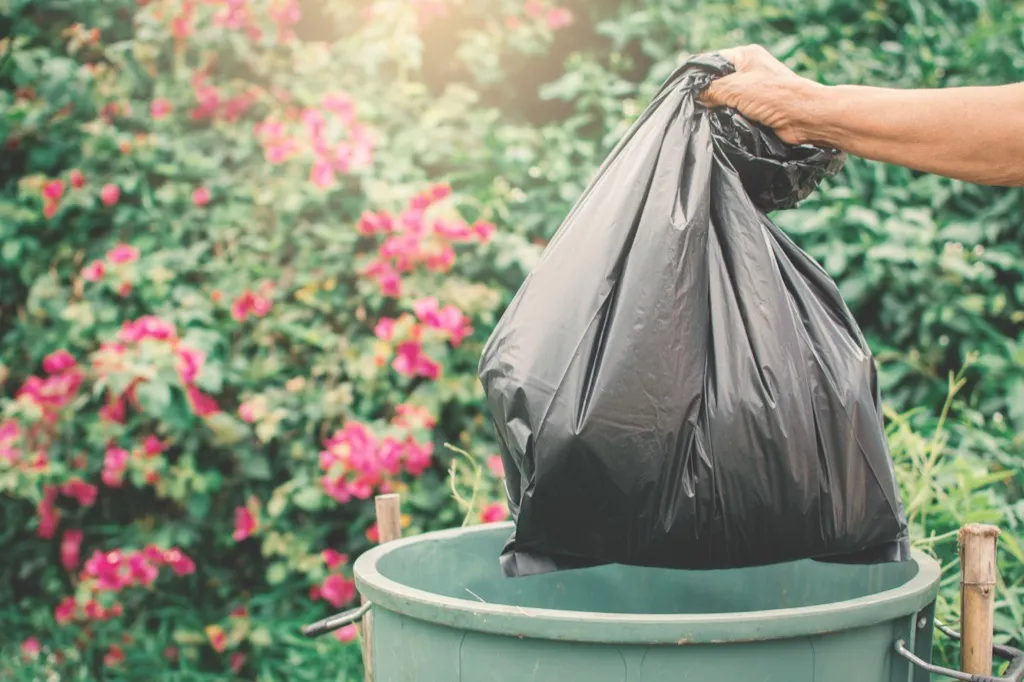
Here’s the cardinal rule for trash: Toss it in the trash can. “It can be tempting to use the toilet as a garbage can, but you should never flush anything but toilet paper and human waste,” says Mark Dawson, chief operating officer at Authority Brands, which owns Benjamin Franklin Plumbing. “Sending trash or other bathroom products down the drain can clog your pipes in a hurry and potentially cause the toilet to overflow in a nasty and hazardous mess.”
2
Or taking “flushable” at face value

While a product may claim to be flushable—and this goes for everything from wipes to tampons—the only thing you should be flushing down the toilet is toilet paper. “Toilets are more water-efficient now than they were 20 years ago, so there sometimes isn’t enough volume in the flush to force debris down,” Marcin Wroblewski, president of ExpressRooter Plumbing in Toronto, told Reader’s Digest. “An object will get lodged in the trap and cause blockage when waste builds up days later.”
3
Pouring grease in the sink

We know properly disposing of grease after a hearty meal is a pain. But simply pouring it down the drain can do long-term harm to your pipes. “The fat and grease can clog your drain badly enough to force you to call a plumber,” explains Dawson. “Plumbing works best when it’s well cared for—not abused with grease.”
4
Not rinsing dishes before loading them into the dishwasher

Yes, it’s called a dishwasher, but tossing in dishes, pots, and pans covered in large food particles can actually cause some serious damage to the appliance, leading to long-term problems down the line. “Homeowners may have to get their dishwasher repaired more often if they don’t rinse their dishes before loading, or at least remove larger food pieces,” explains Audrey Monell, owner of Forrest Anderson Plumbing and AC in Glendale, Arizona. “Food that gets stuck on dishes causes the dishwasher to work harder, which can wear down parts faster, resulting in problems.”
5
Or washing things that aren’t dishwasher safe

Your dishwasher is not meant to handle everything and anything either. Loading the appliance up with items it’s not meant to wash can cause major problems. As Consumer Reports notes, you should never stick cast-iron cookware, sharp knives, or wooden utensils in the dishwasher. Also, if you’re the type to cook salmon in the dishwasher (yes, that’s a thing!), reconsider. Most dishwasher manufacturers don’t test their appliances for cooking capabilities.
6
Relying on temporary fixes instead of calling a plumber

You may think you’re pretty capable around the house, but those “temporary” fixes have a habit of sticking around much longer than you’d initially intended. “A homeowner may be able to ‘kludge’ together a fix for a leaky pipe or broken valve, but usually, the damage done over time by leaving such temporary fixes in place will lead to bigger problems,” note the experts at D&F Plumbing, which serves parts of Oregon and Washington state. “Plumbing systems are more complex than they appear. Smart homeowners trust a professional to fix things the right way.”
7
Using home products with harsh chemicals

You might imagine those strong metal pipes can handle anything you throw at, or down into, them. But pipes are often more sensitive than you might expect. “Chemicals in home products such as drain cleaner can also cause problems,” according to the D&F Plumbing experts. “What might seem like a quick and easy way to fix a clog can actually eat away at the pipes and do serious damage.”
8
Not replacing your water heater

You’re supposed to replace your water heater every 10 years, and failing to do so can seriously damage your home. According to D&F Plumbing, when water heaters break down, “they can cause backups, leaking, and other havoc in your home.”
9
Setting your water heater temperature too low
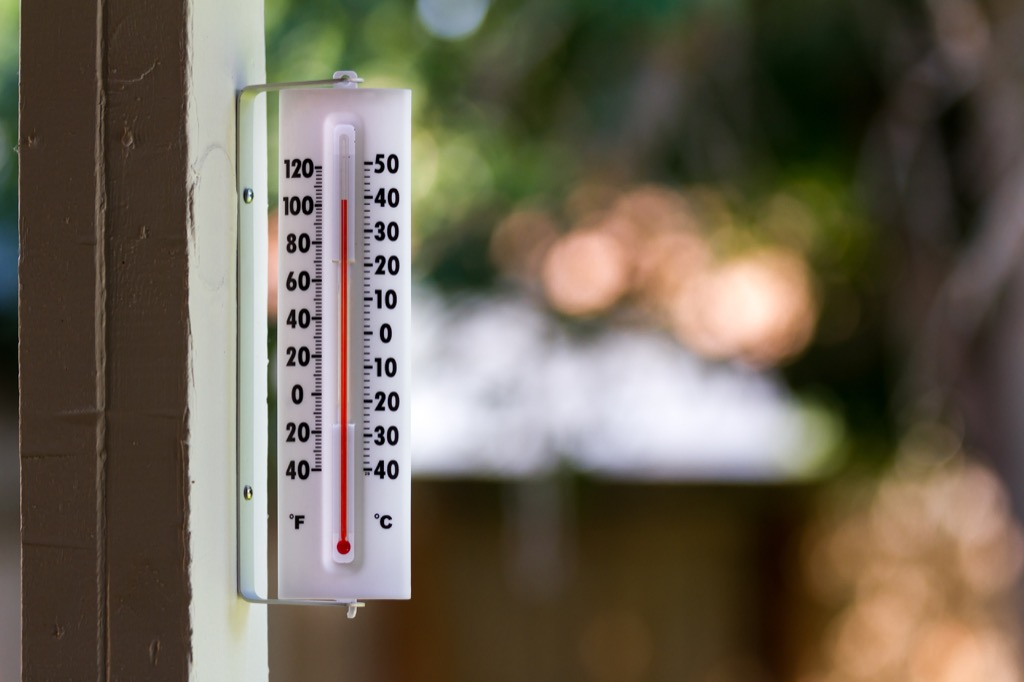
You should never let your water heater temperature fall below 120 degrees Fahrenheit. If you do, you’re opening your home to dangerous bacteria. “At this temperature, harmful pathogens—like the kind that cause Legionnaires’ disease—are prevented from multiplying and may be killed,” says Dawson. “As the temperature gets higher, pathogens die off quicker. For that reason, other agencies like the Occupational Safety and Health Administration (OSHA) recommend a water heater temperature of 140 degrees Fahrenheit.”
10
Placing too much weight on plumbing fixtures
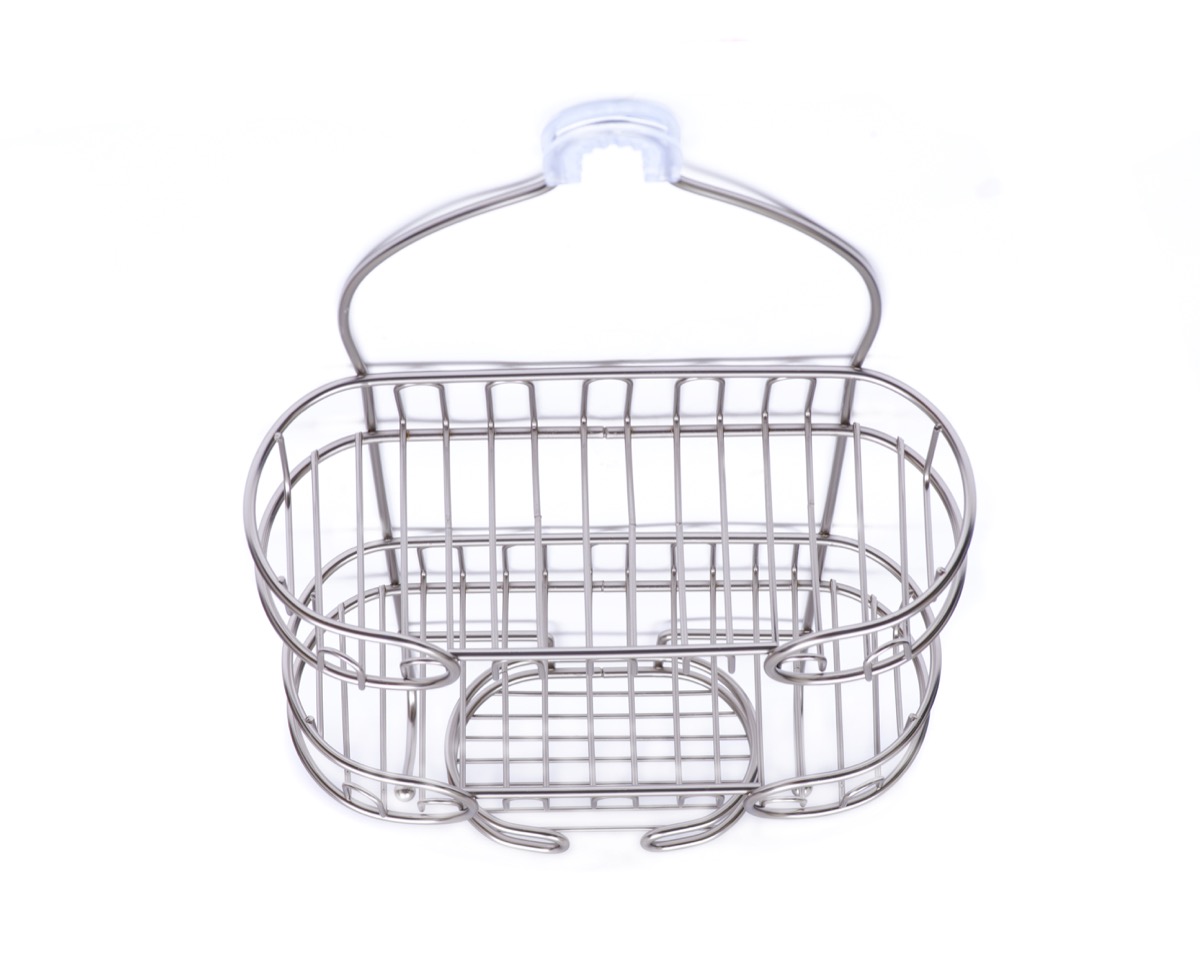
While your shower caddy is convenient, you might want to think twice about trying to squeeze in that extra shampoo bottle. “Too many heavy bottles and shower accessories can result in damage to the shower head or other plumbing parts you may hang things from,” writes ImproveNet’s Jaclyn Crawford. “An easy solution is to find a free-standing shower caddy or shower shelving.”
11
Not knowing how to turn off your water

When there’s an emergency and you have to turn off your water, you need to know where to do so in order to avoid major damage. “Plumbing utilities typically have individual valves that cut water supply to the specified location,” says Crawford. “In an emergency or to inform the plumber, it’s a good idea to locate your water main too.”
12
Or not knowing where pipes are

As Crawford points out, not knowing where your pipes are can cause some serious issues, no matter if you’re doing a major renovation or just installing a towel rack. “A simple hole in the wall can turn into a leaky pipe if you’re unaware of what is behind where you plan to drill or cut,” she says. “Always place towel racks and hooks into the studs of the wall. A stud finder is a great investment … and can help you avoid a plumbing disaster. If you plan on doing any major work near or around your plumbing, call a pro to help.”
13
Ignoring minor leaks

Ignoring a minor leak can lead to major problems. “One of the biggest mistakes people make is ignoring a minor leak,” says Monell. “Whether it’s a leaking toilet, a cracked pipe, or a dripping faucet, small leaks can turn into big problems by damaging floors and ceilings, rotting drywall, and promoting dangerous mold growth—not to mention the damage costs a lot of money to repair.”
14
Ignoring running toilets
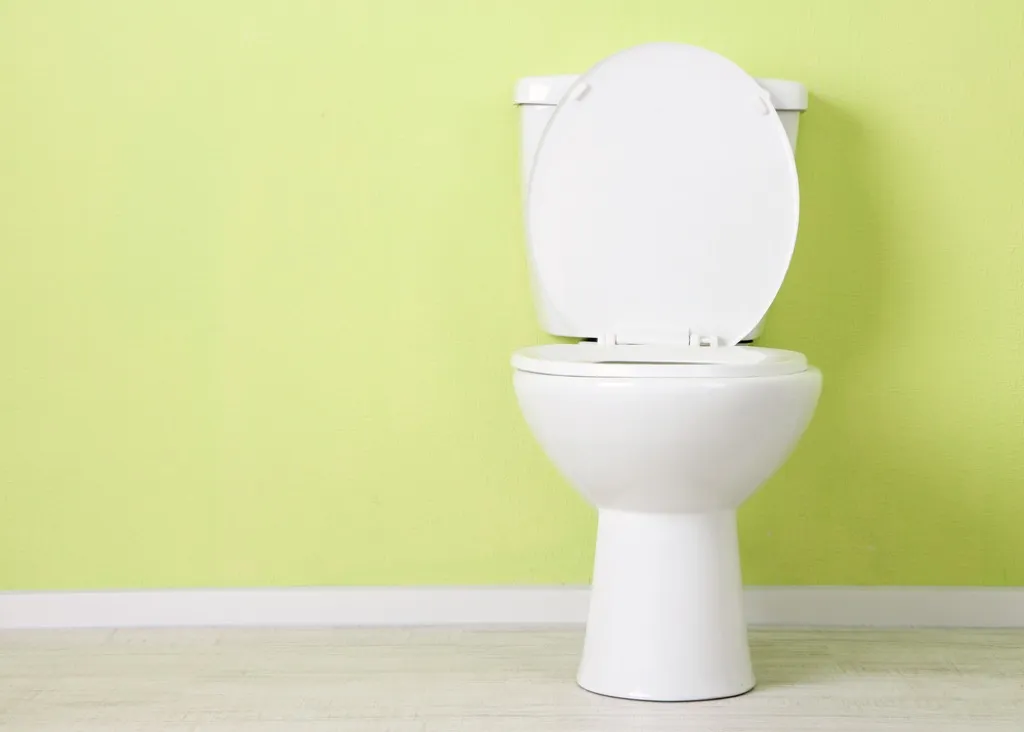
It might seem like a small annoyance, but a continuously running toilet can waste more than 200 gallons of water a day. As the experts at Roto-Rooter explain, “A running toilet can be the symptom of a variety of plumbing problems, and it can be hard to discern whether those problems will require professional help.” Generally this is one of the easiest plumbing problems to fix with a quick jiggle of the handle or peek into the tank, but it’s also one of the most often overlooked. So don’t fall into that trap!
15
Ignoring mold or mildew

A little bit of mildew is not unusual in a bathroom, but when it starts popping up outside the shower, you better address it. “Mold or mildew on non-shower walls, or in corners of the bathroom, is a clear sign that water is leaking somewhere and finding its way to those areas,” writes J.T. Gonzales of home-services platform Angi. “A leaking pipe provides plenty of moisture, so the longer it takes you to detect and fix the leak, the easier and faster mold will grow.”
16
Not doing something about that stain

A small stain on the ceiling or wall can quickly turn into a big stain if not addressed. And a big stain can signify major issues.
“An occasional wet floor in a second-story bathroom won’t cause enough seepage to damage anything underneath it. [But] any brown, copper, or dark stain on the ceiling is a sign of a pernicious water leak in the ceiling,” writes Gonzales. “A sagging ceiling is a sign that water from a leak is reaching the area.”
17
Ignoring signs of pump failure

Do you know the signs that your pump might be failing? If not, you could be setting yourself up for a flooded basement. Checking connections and cleaning the pump and vents are ways to avoid this.
18
Ignoring leaking ducts and flue pipes

Common wisdom suggests that if your boilers and furnaces are functioning, they’re fine. But there are subtle signs you can spot that might mean major problems. As Patrick Knight, a training, licensing, and inspection support manager at WIN Home Inspection, told Reader’s Digest, signs of damage include a yellow or jumpy pilot flame or leaking or rusty flue pipes. And you can’t notice these things if you don’t check them out at least once a year to be safe.
19
Leaving pipes exposed in the winter
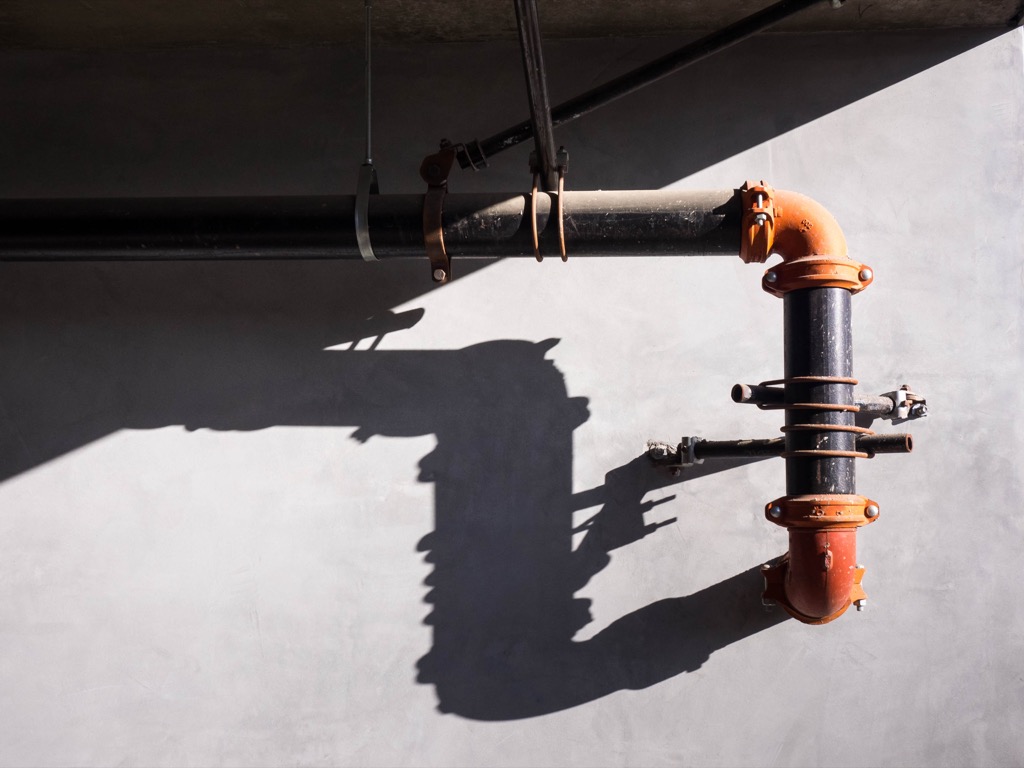
Just as you wouldn’t leave your skin exposed during the coldest months of the year, you’d best cover up any exposed pipes when the temperature drops. “When the temperatures drop below freezing, the pipes in your home should be protected by your heating system,” explains Dawson. “But any plumbing that goes through unheated parts of your home—or is exposed to the outdoors—is liable to freeze and possibly burst. Make sure you drain your irrigation system and insulate any pipes that could be at risk before you have to deal with a frigid flood.”
20
Not having your septic tank inspected

If your home has a septic tank rather than a city sewer, you’re supposed to get it checked once a year by a professional. “Problems in the tank may start out small, but can quickly become large issues if left unaddressed. Sewage backups can be extremely damaging to your home, while major repairs to your septic system can be expensive,” explain the plumbers at Mr. Rooter in Portland, Oregon. “Additionally, no matter how well you treat your septic system, it must be pumped at regular intervals to remove solid wastes.”
21
Mixing up your materials

There are plenty of options when it comes to pipe material, so you definitely should do your research prior to installing certain ones in your home.
“If you want to make a change, like swapping outdated PVC plastic for more modern PEX, be sure you understand what the consequences might be,” Dawson says. “Some types of plastic can’t handle hot water, and there are other materials you shouldn’t match—copper connectors on galvanized metal pipes can cause corrosion, for example, leading to blockages down the road.” And for more amazing home care advice, check out the 23 Home Remodeling Projects That Definitely Won’t End Well.
To discover more amazing secrets about living your best life, click here to follow us on Instagram!